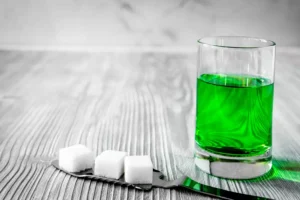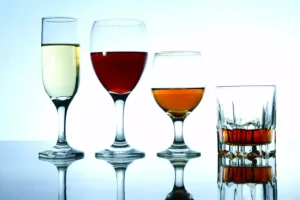
There are ways to help your teen cope with the pressures to drink alcohol and make better choices. As they grow up, children often try to assert their independence and establish their identity. They try to do this in manners that challenge authority, particularly the close authority figures they have followed most of their lives, such as teachers and parents. Use of alcohol is one way to challenge this authority, but children and adolescents do not fully understand the risks on their health and behavior. For youth in the first stage of alcohol use (having access but not having yet used alcohol), preventive measures are used.
- The 2019 Youth Risk Behavioral Survey found that more than a quarter of high school students drank alcohol in the 30 days before they took the survey, and one in seven reported binge drinking in that same time period.
- Nearly 8% of teens who drink say they drink at least five or more alcoholic drinks in a row (binge drinking).
- Know where and how to get treatment and other support services and resources, including counseling or therapy (in person or through telehealth services).
- This is not simply a problem for some families—it is a nationwide concern.
- And – although not recommended – the CMOs also say if children do drink alcohol, it shouldn’t be until at least 15 years of age.
- A gap in the literature on adolescents’ alcohol use is whether the influence of romantic partners’ alcohol use is distinct from the well-known influence of peers and parents.
National Institute on Alcohol Abuse and Alcoholism (NIAAA)
- But alcohol is harmful to children and young people – drinking before becoming an adult has additional risks for health and wellbeing.
- Therefore, professionals recommend that the youth be thoroughly educated about the effects and risks of alcohol, that fair but firm limits be set on the use of alcohol, and that the user attend brief counseling, a self-help group, and/or a family support group.
- A prospective four-year study measured within-subject changes in brain volume for males and females.
- Read about the mental health challenges facing teenagers at Healthline and Psych Central’s Youth In Focus series, which shares useful tips, resources, and support.
- The percentage of pure alcohol, expressed here as alcohol by volume (alc/vol), varies within and across beverage types.
A teenage artist born with foetal alcohol spectrum disorder (FASD) has published a book of his work to help others struggling with the condition. NIAAA has information about alcohol use, alcohol use disorder, and treatment options. Also known as the Treatment Referral Routing Service, this helpline provides 24-hour, free, confidential treatment referral and information about mental and/or substance use disorders, prevention, and recovery in English and Spanish. All of these factors make it important to find treatment providers who have special expertise in treating adolescents.
Treatment and Prevention

Consistent binge drinkers also reported increased P3b amplitude in the central and parietal regions during an attentional control task compared to controls, with more pronounced differences observed after two years of consistent binge drinking (85). The results of the interaction analyses moderating partner alcohol use by gender point to a unique context and structure of romantic relationships. The influence of a dating partner on drinking is salient for both male and female adolescents, but the effect on frequency of use is stronger for male adolescents. The data indicated that the role of the partners’ alcohol use is stronger for male than female adolescents regarding the frequency of alcohol use, but not regarding alcohol-related problems. Results of the interaction analysis between age and partner suggested that the use of alcohol by a dating partner may be an especially salient influence on drinking behavior of older teens.
Alcohol Abuse & Treatment Information On Other Groups
Notably, much of the work using rodent models has been conducted only in males; where possible, rodent research testing both sexes is reported. As noted previously with neurodevelopment trajectories, gender differences are also reported in alcohol use estimates. Worldwide estimates of alcohol use also show higher rates of drinking occur among young males than females (33). According to data from the National Survey on Drug Use and Health in the United States, alcohol is the most frequently used drug by teenagers. Significant statistics regarding alcohol use in teens include that about half of junior high and senior high school students drink alcohol on a monthly basis, and 14% of teens have been intoxicated at least once in the past year. Nearly 8% of teens who drink say they drink at least five or more alcoholic drinks in a row (binge drinking).
Parents’, Peers’ and Adolescents’ Alcohol Consumption
Talk to your child about what’s going on in their life and any issues that may have prompted their alcohol use. Teenagers often feel invincible—that nothing bad will ever happen to them—so preaching about the long-term health dangers of underage drinking may fail to discourage them from https://ecosoberhouse.com/ using alcohol. Instead, talk to your teen about the effects drinking can have on their appearance—bad breath, bad skin, and weight gain from all the empty calories and carbs. You can also talk about how drinking makes people do embarrassing things, like peeing themselves or throwing up.

Top Alcohol and Teens Related Articles

And by working with their friends’ parents, you can share the responsibility of monitoring their behavior. Similarly, if your teen is spending too much time alone, that may be a red flag that they’re having trouble fitting in. It’s important to remain calm when confronting your teen, and only do so when everyone is sober. Explain your concerns and make it clear that your fears come from a teenage alcoholism place of love. Your child needs to feel you are supportive and that they can confide in you, since underage drinking is often triggered by other problem areas in their life. As disturbing as it can be to find out that your child or teen has been drinking, it’s important to remember that many teens try alcohol at some point, but that doesn’t mean they automatically have an abuse problem.

Targeting cognitive makers of substance use through cognitive retraining treatment strategies has demonstrated some success in reducing alcohol use (144), as well as in a range of clinical populations including various substance use disorders (145). Researchers are also beginning to investigate the effectiveness of cognitive training as a prevention initiative for adolescent substance use (146–148), although early findings suggest this method may need to be supplemented with a substance use prevention program (149). Longitudinal studies with large, diverse, representative samples of youth and a range of detailed measures are key to helping understand the behaviors that convey disadvantages to adolescent and young adult development and outcomes. To date, a handful of large-scale multisite studies are being conducted to gain insight into the consequences of adolescents transitioning into and out of substance use. NCANDA has already been able to confirm impressions from prior smaller studies that adolescent heavy drinking appears linked to accelerated gray matter decline,40 disrupted functional connectivity,30 and reduced cognitive performance. Determining the degree to which these effects remit or persist with alcohol abstinence or reduced use will be a key next step in this line of work.